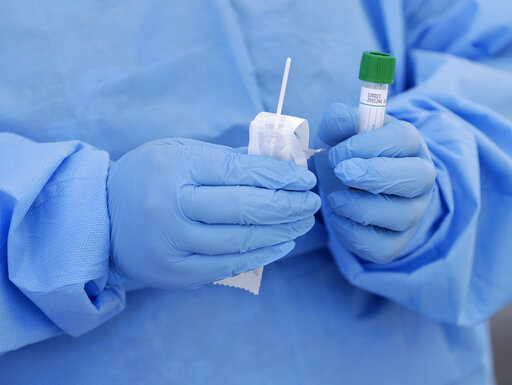If the novel COVID-19 pandemic is brought under control soon, the disease’s impact on the insurance industry as a whole may be pretty much a wash.
If not, the industry may be on the verge of an historic catastrophe.
A report released Friday by Willis Towers Watson projects that personal and commercial auto insurers in the United States and United Kingdom will see a $51 billion reduction in claims costs this year, while returning an estimated $16 billion to consumers through refunds. Refunds estimated so far are estimated at $10 billion and insurers will likely kick more back to customers if stay-at-home orders continue, the analysis says.
On the other hand, COVID-19 may add $16.7 billion to U.S. workers’ compensation losses and increase losses in the U.S. and U.K. by $11 billion for business-interruption and event-cancellations, $4 billion for credit and sureties, $1.5 billion for employment practices liability and $1.5 billion for directors and officers insurance, the report says.
If you calculate net decrease in losses for auto ($35 billion) and compare that to the sum of the increased losses in the other lines ($34.7 billion) and you will find that the two numbers pretty much cancel each other out.
Those projections follow Willis’ “moderate scenario,” which assumes that four months of strict and two months of light social distancing will be effective at controlling the spread of the novel coronavirus fairly quickly. The moderate projection also assumes economic growth will resume before this fall and consumer confidence will return by winter.
There are plenty of reason to be skeptical as to whether strict social distancing will last that long. As of Friday, more than half of the U.S. states had allowed some businesses to reopen. In Georgia, consumers can even go get a tattoo or a haircut.
If a “severe” scenario projected by Willis plays out, the insurance industry could be in dire straits. While social distancing will reduce U.S. and U.K. auto claims by $77 billion, the pandemic could increase costs for other lines — primarily workers’ compensation and general liability — by $140 billion. That is more than a third of the entire $365 million in premiums reported by U.S. property and casualty insurers in 2018.
The severe scenario assumes that social distancing lasts for 12 months and a global economic contraction continues until early next year.
For true doomsday believers, Willis offered a “limited success” scenario that assumes government lift social distancing rules after three months because of the catastrophic economic cost and the virus spreads until finally controlled by “herd immunity.” If that plays out, Willis projects $92 billion increase in workers’ compensation losses, a $27 billion increase for general liability and $22.7 billion more in event cancellation losses, as well as increases in losses to other lines.
Willis also offers an “optimistic scenario for those who see the glass as half full. That assumes government mitigation measures are highly effective and are able to control COVID-19 within three months, while consumer demand for get-away time returns within four months. In that case, auto claims drop by only $28 billion, offset by an additional $1.1 billion in business interruption and event cancellation claims and $600 million more for directors and officers claims. A $3.3 billion increase in workers’ compensation claims from the health care sector is largely wiped out by a $3.1 billion decrease in claims from workers outside of health care in the optimistic scenario.
“We have not associated probabilities with these scenarios, but we regard all of them as possible and at his point should not be considered extreme tail scenarios (although some of them may have been before the COVID-19 outbreak),” the report says.
Workers’ compensation line will suffer the greatest losses from the pandemic compared to other lines in each of the scenarios. Ultimate losses will vary greatly depending on how many workers are infected, and what share of those who’re infected must be hospitalized or eventually die.
Willis estimated that each COVID-19 claim will bring $35,000 in medical treatment costs and $3,000 in temporary disability. Some of those will be death claims that cost an average of $1 million for physicians and $750,000 for other health care workers, the study says.
In its moderate scenario, Willis assumed that 20% of hospital-employed physicians and nurses will be infected and 12.5% of other healthcare workers will be infected. That amounts to 1.1 million infected workers, with. 9.5% of them requiring hospitalization and 9,300 of them dying from the disease.
In the worst-case, “limited success” scenario, Willis projects a 75% infection rate for all health care workers, resulting in 7.9 million cases and 129,000 deaths.
The broad range of scenarios that Wilis included in the report mirrors an analysis released earlier this month by the National Council on Compensation Insurance. That report projected losses ranging from $2 billion to $81 billion, depending on infection rates and the number of claims that are deemed to be compensable.
In conclusion, Willis said the cumulative impact of the pandemic could “substantially exceed” losses from the Sept. 11, 2011 terrorist attack on the World Trade Center. Along with those losses, the industry faces a serious risk that its reputation will suffer, the report says.
“A good portion of these losses will probably be considered to have been unintended, arising from broad wordings in smaller commercial policies,” the report says. “It will also beg a question however as to the full extent this should be transferred into the industry, which after all exists to provide continuity for just this type of event.”
Was this article valuable?
Here are more articles you may enjoy.


 Bankrupt 23andMe’s DNA Data Gets Sale Nod as Concerns Linger
Bankrupt 23andMe’s DNA Data Gets Sale Nod as Concerns Linger  Trump’s Tariffs Threaten to Endanger the Cheap American Car
Trump’s Tariffs Threaten to Endanger the Cheap American Car  Oracle Warns Health Customers of Patient Data Breach
Oracle Warns Health Customers of Patient Data Breach  FAA Must Do Better After Midair Collision, Acting Chief Says
FAA Must Do Better After Midair Collision, Acting Chief Says 